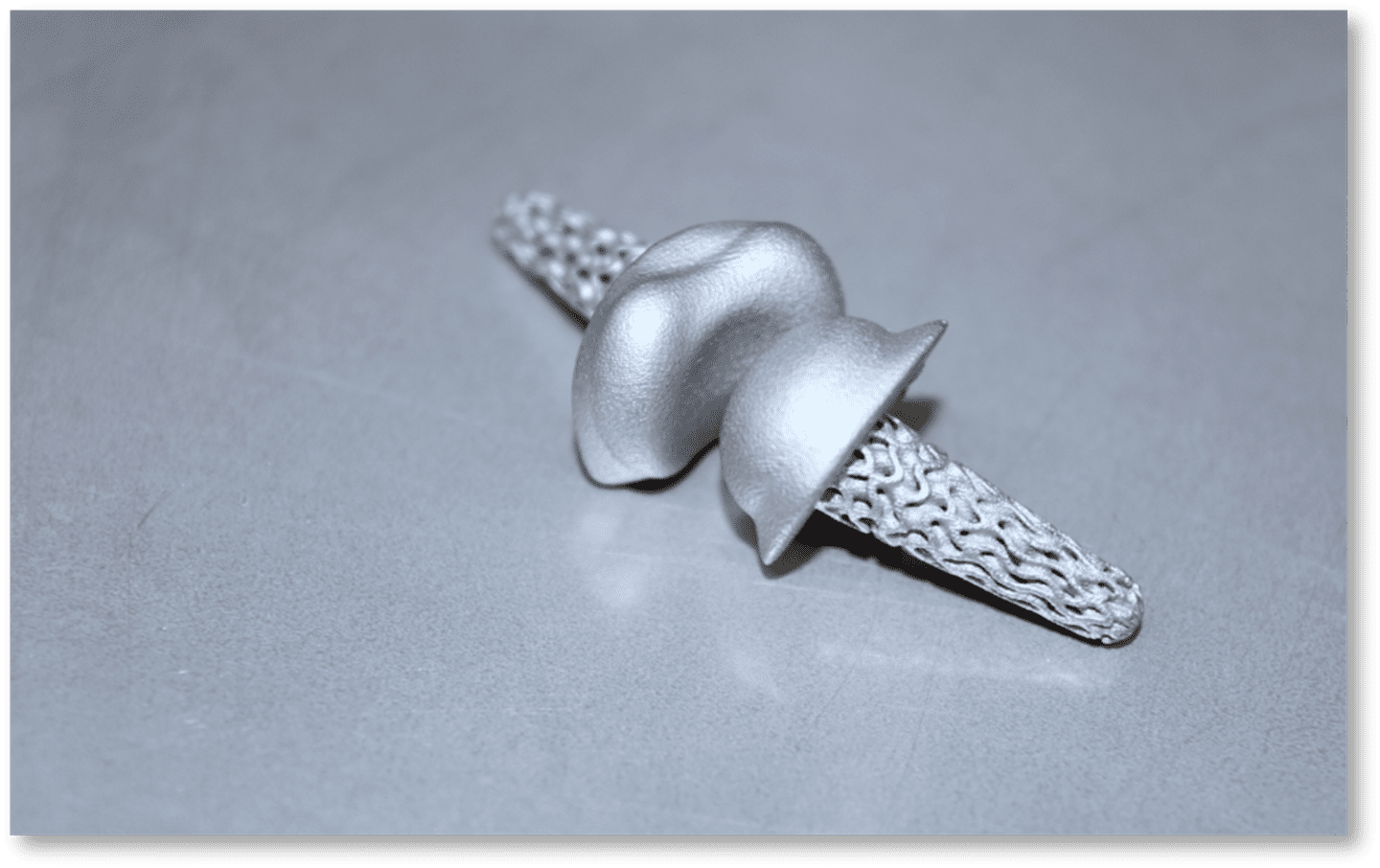
The FingerKIt consortium of FraunHofer Institute uses AI to develop personalized 3D-printed joint implants so that these delicate finger parts can be replaced when necessary. The goal is to create a perfectly fitting solution that does not slip out of place and that restores the previous level of mobility, writes the research Institution in a press release.
When fingerjoints become inflexible, after a sports accident or as a result of rheumatoid arthritis for example, it can put serious limitations on someone’s life and cause them physical and mental strain. For certain professions — such as musicians, surgeons or craftspeople — it can even mean the end of their career. At the moment, if a finger joint loses its function due to accident or injury, the treatment methods are limited. In the future, a solution developed by several Fraunhofer Research Institutions could help to restore the mobility of fingers with damaged or ruined joints.

AI-model
An automated process chain will allow personalized finger joint implants to be produced from metallic or ceramic materials. The scientists at Fraunhofer MEVIS started off by developing a piece of AI-based software which is able to turn two-dimensional X-ray images into three-dimensional models of the finger bones and correct any malposition of the fingers. The researchers from Fraunhofer IAPT then use AI to derive the individual implant design from the finger model and send it for 3D printing. The implants then undergo a sintering process, which means that they are compacted and solidified.
The researchers have developed a number of innovations in the course of this project: “The AI-based calculation of a three-dimensional implant design from 2D templates such as X-ray images is completely new and is now patent pending,” reveals Dr. Arthur Seibel, head of the Part Design group at Fraunhofer IAPT. His colleague Dr. Philipp Imgrund, head of the AM Process Qualification department at Fraunhofer IAPT, adds: “Process engineering is special too. As the structure of the implant shaft is very delicate, we have chosen to use the metal binder jetting 3D printing method for titanium. This method allows for an extremely precise production of the small, complex implants and also enables us to structure the surface of the shaft in such a way that it grows into the bone more effectively. Furthermore, this minimizes the finishing work required for the joint surfaces, which need to be as smooth and frictionless as possible.”

A new standard for patient care
The Fraunhofer innovations mean that, in the future, it will be possible to provide effective treatment even for complicated cases such as severely bent fingers, missing bone parts or very small joints. Furthermore, thanks to the automated model creation and 3D printing, the personalized production process also saves time: According to the researchers’ initial calculations, it may be possible to save up to 60 percent of the time normally required from identifying the need for an implant to fitting it in the patient. This means that the process could be completed within a matter of days, resulting in shorter hospital stays and, hence, lower costs.
Because the implant design is modeled on the original joint, the level of mobility achieved is much greater than with currently available solutions. Dr. Imgrund sums up the project as follows: “FingerKIt could completely change the treatment of rheumatoid arthritis, for example. Personalized implants could become the gold standard.”

Selected for you!
Innovation Origins is the European platform for innovation news. In addition to the many reports from our own editors in 15 European countries, we select the most important press releases from reliable sources. This way you can stay up to date on what is happening in the world of innovation. Are you or do you know an organization that should not be missing from our list of selected sources? Then report to our editorial team.
